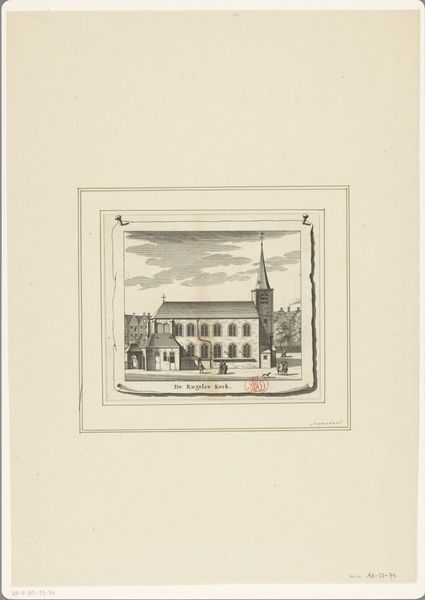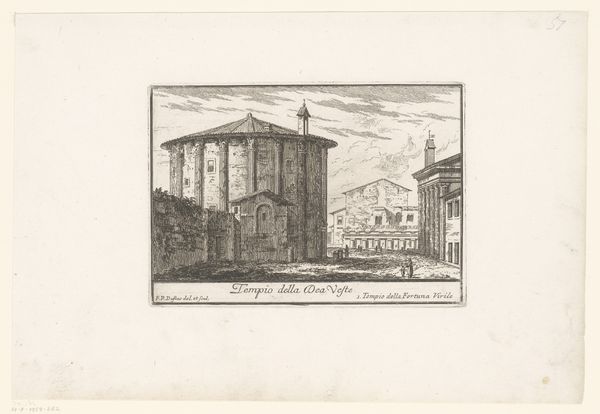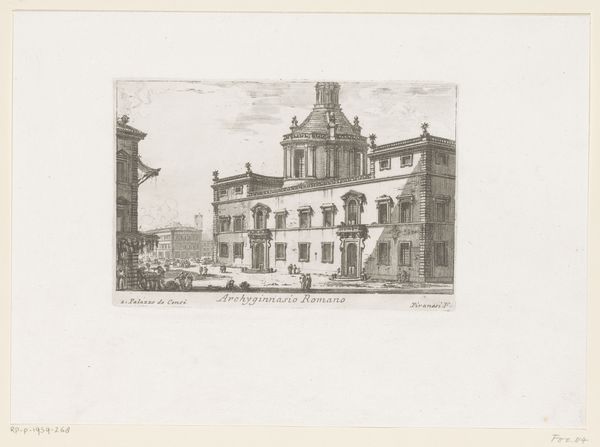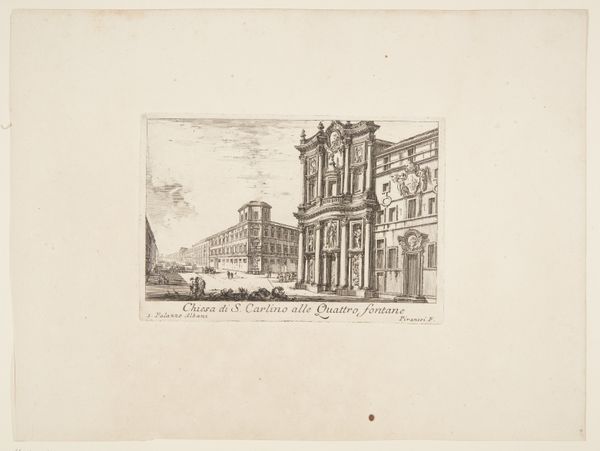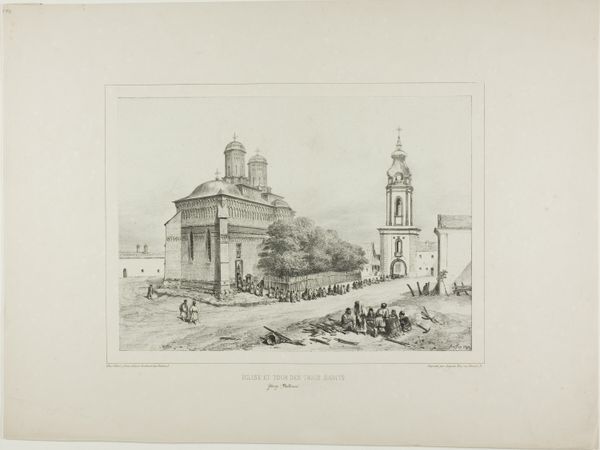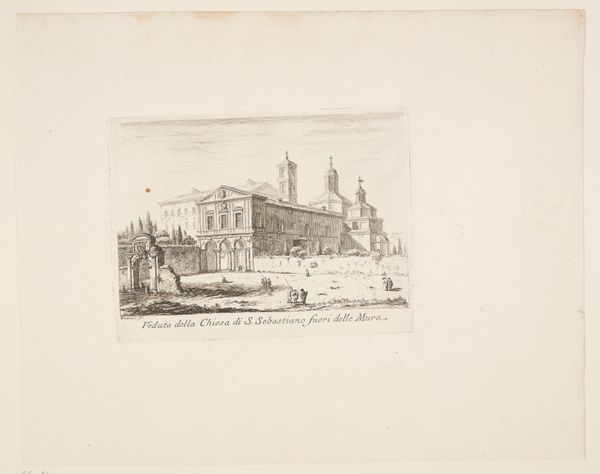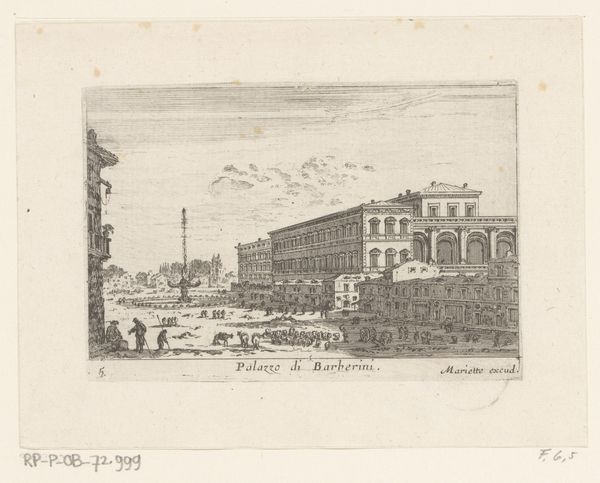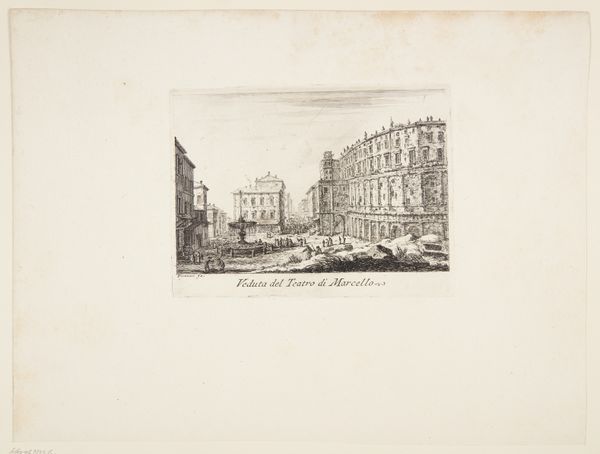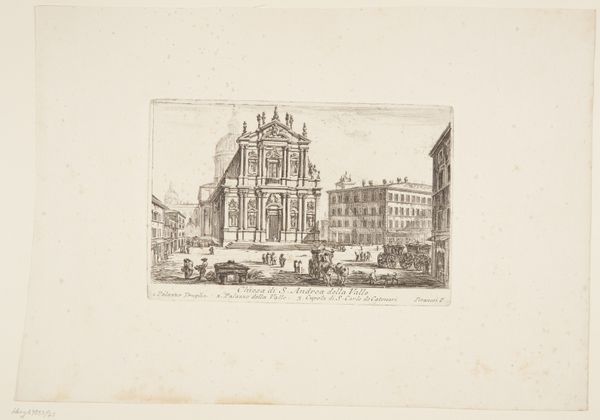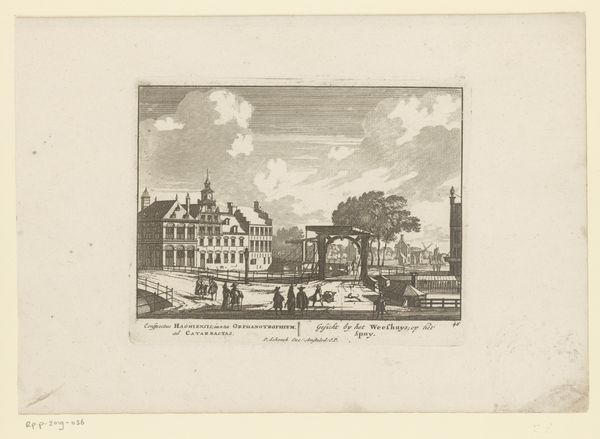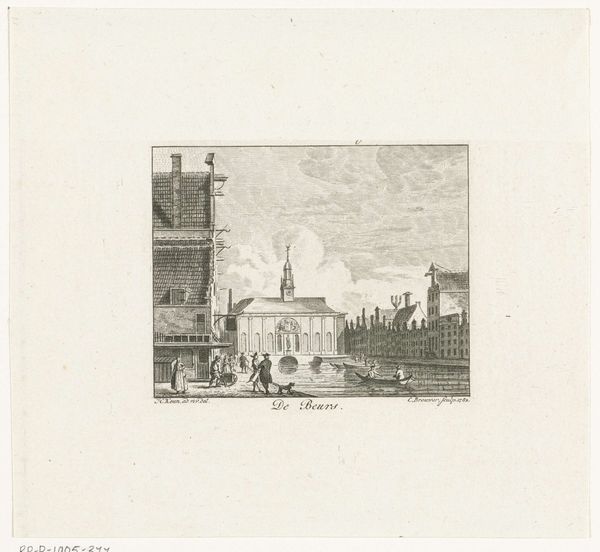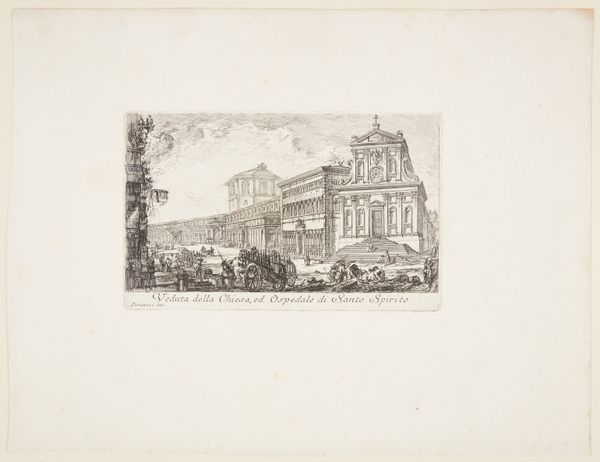
Dimensions: height 212 mm, width 339 mm
Copyright: Rijks Museum: Open Domain
Willem Swidde made this print of the Maria Magdalenakerk in Stockholm around 1680, using etching and engraving techniques. Look closely, and you can see how the network of fine lines creates tone and texture, from the heavy stonework of the church to the cloudy sky. The printmaking process involves coating a metal plate with a waxy, acid-resistant material called a ‘ground’. The artist then draws through the ground, exposing the metal. When acid is applied, it bites into these exposed lines, creating grooves. Ink is then applied to the plate and wiped off, remaining only in the etched lines. Finally, the plate is pressed onto paper, transferring the image. Swidde's skill lies in his control of the etching process, varying the depth and density of lines to create a detailed and atmospheric image. The print could then be reproduced multiple times, a key feature of the emerging culture of mass production and consumption in the early modern period. The finished print not only captures the likeness of a prominent building, but also reflects broader social and economic forces at play during this time.
Comments
No comments
Be the first to comment and join the conversation on the ultimate creative platform.
